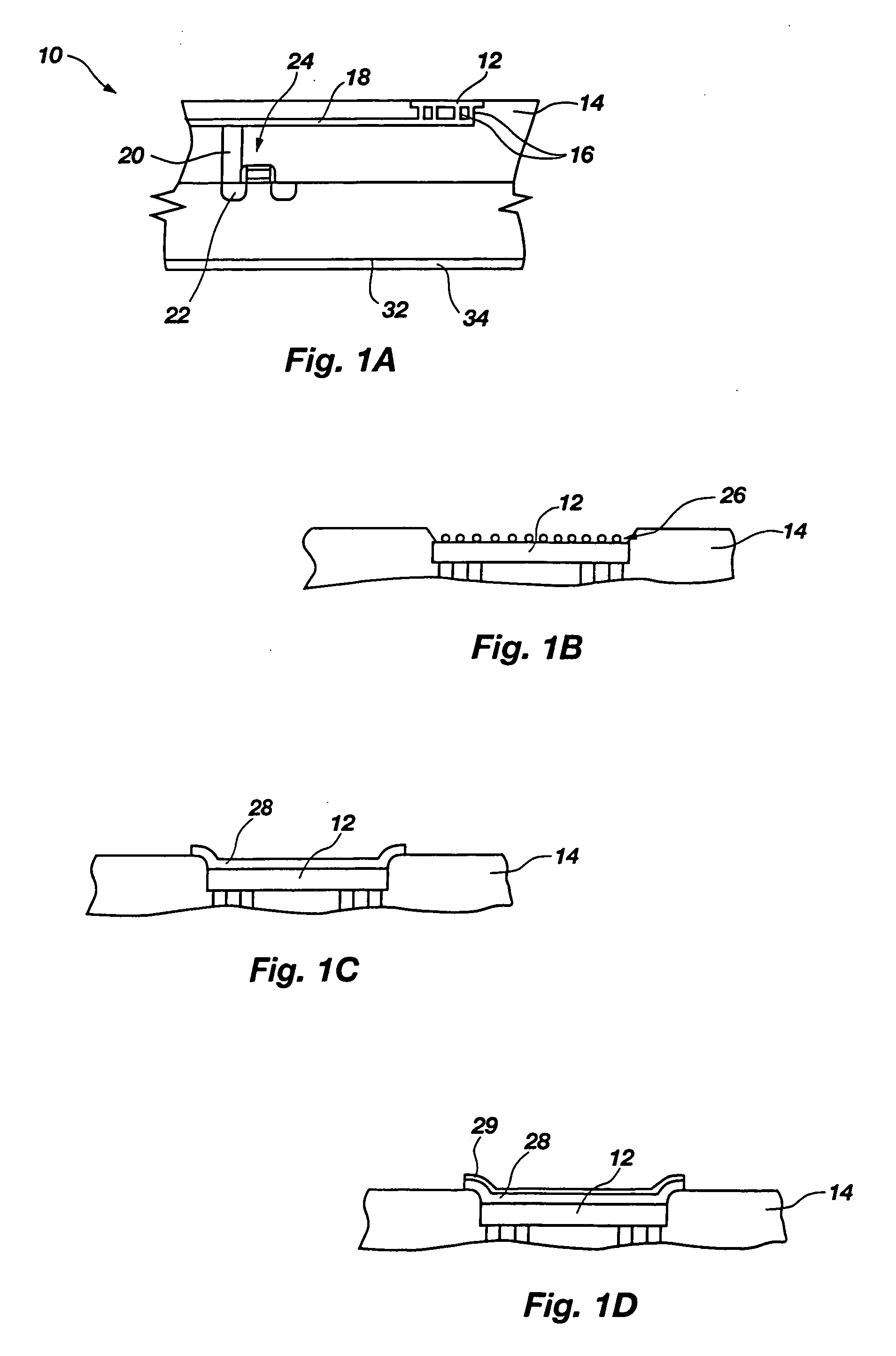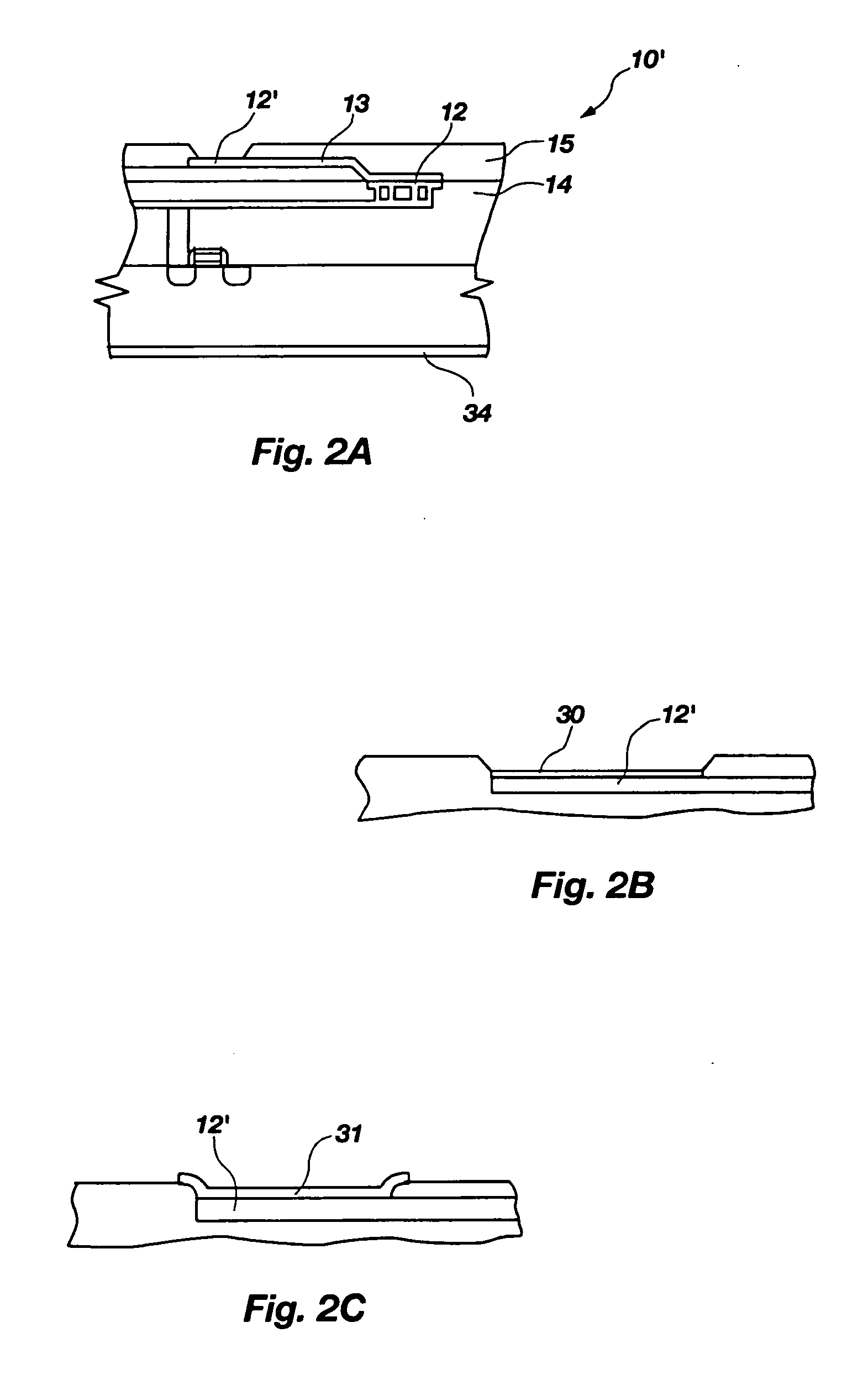Selective passivation of exposed silicon
a technology of exposed silicon and selective passivation, which is applied in the direction of liquid/solution decomposition chemical coating, transportation and packaging, coatings, etc., can solve the problems of high manpower cost and complex equipment, and achieve the effect of easy control of thickness and high manpower cos
- Summary
- Abstract
- Description
- Claims
- Application Information
AI Technical Summary
Benefits of technology
Problems solved by technology
Method used
Image
Examples
Embodiment Construction
[0033] With reference to FIGS. 1A-1D and 2A-2C, different types of bond pads 12, 12′ that are typically used in semiconductor devices 10, 10′ are depicted. In FIG. 1A, a semiconductor device which includes copper bond pads 12 is shown. Copper bond pads 12 are typically formed on a passivation layer 14 of semiconductor device 10 and communicate with underlying, integrated circuitry of semiconductor device 10. By way of example, one or more generally downwardly extending conductive vias 16 may establish electrical communication with conductive traces 18, or “runners,” that, in turn, electrically communicate with the integrated circuitry of semiconductor device 10. For example, runners 18 may lead to contact plugs 20 that provide a conductive link between runners 18 and a conductively doped silicon active-device region 22 of a transistor 24 of semiconductor device 10.
[0034] In order to use a rapid electroless plating method to plate bond pads 12, 12′ without incurring damage to the se...
PUM
| Property | Measurement | Unit |
|---|---|---|
| temperature | aaaaa | aaaaa |
| temperature | aaaaa | aaaaa |
| temperature | aaaaa | aaaaa |
Abstract
Description
Claims
Application Information
 Login to View More
Login to View More - R&D
- Intellectual Property
- Life Sciences
- Materials
- Tech Scout
- Unparalleled Data Quality
- Higher Quality Content
- 60% Fewer Hallucinations
Browse by: Latest US Patents, China's latest patents, Technical Efficacy Thesaurus, Application Domain, Technology Topic, Popular Technical Reports.
© 2025 PatSnap. All rights reserved.Legal|Privacy policy|Modern Slavery Act Transparency Statement|Sitemap|About US| Contact US: help@patsnap.com



